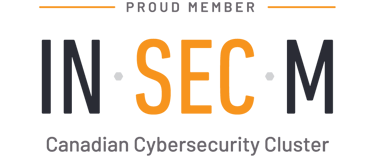The issues with current cyber security products
Cybersecurity products, while crucial for protecting systems and data, often face several challenges and limitations. Here are some common issues with current cybersecurity products:

The issues with current cyber security products
Cybersecurity products, while crucial for protecting systems and data, often face several challenges and limitations. Here are some common issues with current cybersecurity products:
Complexity: Many cybersecurity products are overly complex, requiring extensive configuration and management expertise. This complexity can lead to misconfigurations and errors, which attackers may exploit.
Incompatibility: The diversity of IT environments means that cybersecurity products often struggle with interoperability and compatibility issues. Integrating multiple products from different vendors can be challenging and may result in gaps or overlaps in coverage.
Lack of Integration: Related to the previous point, the lack of integration between different cybersecurity solutions can hinder overall effectiveness. Siloed products may not share threat intelligence or coordinate responses, leaving organizations vulnerable to sophisticated attacks.
False Positives and Negatives: Many cybersecurity products generate false positives (incorrectly identifying benign activity as malicious) or false negatives (failing to detect actual threats). These inaccuracies can lead to alert fatigue and undermine trust in the security system.
Limited Scalability: Some cybersecurity products struggle to scale effectively, particularly in dynamic or cloud-based environments. As organizations grow or adopt new technologies, their security solutions may struggle to keep pace, leading to gaps in coverage.
Resource Intensiveness: Certain cybersecurity products can be resource-intensive, consuming significant processing power, memory, or network bandwidth. This overhead may impact system performance and increase operational costs.
Insufficient Threat Coverage: While cybersecurity products may excel at detecting certain types of threats, they may be less effective against emerging or sophisticated attack techniques. Attackers constantly evolve their tactics, requiring cybersecurity solutions to adapt rapidly.
Limited User Awareness and Training: Even the most advanced cybersecurity products are only as effective as the humans operating them. Organizations often neglect user awareness and training, leaving employees vulnerable to social engineering attacks or unintentional security breaches.
High Cost: Many cybersecurity products come with substantial upfront costs, as well as ongoing subscription fees for updates and support. For smaller organizations with limited budgets, these expenses can be prohibitive, leading to underinvestment in cybersecurity.
Regulatory Compliance Challenges: Meeting regulatory requirements such as GDPR, HIPAA, or PCI-DSS can be challenging with off-the-shelf cybersecurity products. Organizations may need to invest additional time and resources to ensure compliance, particularly if their chosen solutions lack built-in features for regulatory adherence.
Addressing these issues requires a multifaceted approach, including improvements in product design, better collaboration between vendors, increased investment in research and development, and a stronger emphasis on user education and awareness.
Contact us
Whether you have a request, a query, or want to work with us, use the form below to get in touch with our team.
Location
2600 - 1066 WEST HASTINGS STREET VANCOUVER BC V6E 3X1 CANADA
Contacts
Contact@yali-cybershield.com



